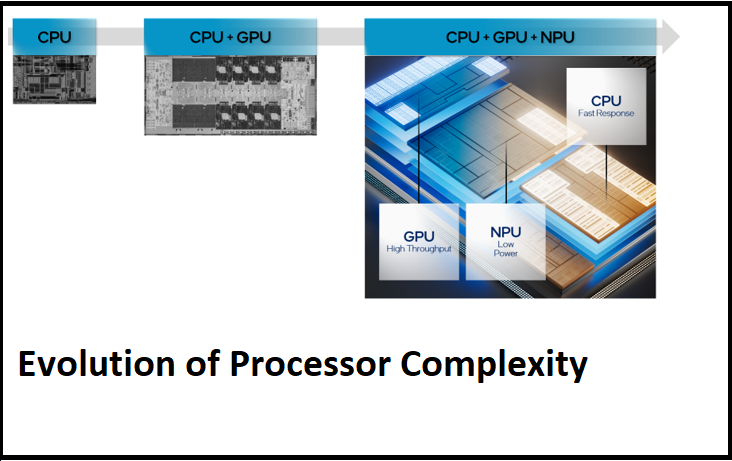Processors are becoming more complex and integrate multiple compute engines and core types that operate over a range of power and frequencies into a single chip. Many original equipment manufacturers (OEM) are leveraging the benefits of platform level power and thermal management such as Intel® Dynamic Tuning Technology (Intel® DTT) to optimize their system designs behavior and deliver unique experiences, delivering high performance when desired to maximize battery life at other times. Traditional methods for specifying and assessing the performance of a processor using a singular base frequency or power consumption do not reflect the range of these design points. Intel has updated processor specifications to reflect real-world dynamic processor behavior more accurately. The information below is designed to help support this change.
Click or the topic for details:
Why is Intel moving away from specifying and assessing the performance of a processor using a singular base frequency or power consumption? What’s different now?
Processors are becoming more complex and integrate multiple compute engines and core types that operate over a range of power and frequencies into a single chip. Legacy singular specifications are obsolete since they do not reflect the dynamic operating range and broad spectrum of system capabilities. Intel has updated processor specifications to reflect real-world dynamic processor behavior more accurately.
How should Intel’s updated processor specifications be interpreted? What is the processor’s dynamic operating range?
Intel processors have a wide operating power/frequency range by design. Intel’s new processor specifications reflect the range of frequency and power consumption between the ‘base’ and ‘turbo’ operations giving the end user a better reflection of processor behavior. Processors are designed to intelligently transition across operational states based on current workload demands and power/thermal constraints. For example, when the system is idling, the processor lowers power consumption to maximize battery life; and when a new application is launched, the processor ramps up to a high-performance state to quickly complete application launch.
Which processor specification is more important for performance, ‘base’ or ‘turbo’?
All aspects of the processor are important for performance.
Intel has multiple compute engines within the processor, with the CPU being analogous to the traditional processor. For workloads that predominantly rely on CPU, short duration workloads are bound by the ‘turbo’ operations, whereas sustained workloads are bound by the ‘base’ parameters. Many workloads tend to be a mixture of some ‘turbo’ and some ‘base’ operations. Intel processors provide compelling end user experiences that utilize various aspects of the processor. Performance hybrid architecture, multiple compute engines, multiple IO ports, and IPs intelligently share resources within a single chip while operating across a wide dynamic operating range of power and frequency. All aspects of the processor ultimately contribute to the desired spectrum of performance in the real-world.
Is it normal to operate below the base power or base frequency?
Yes. When a low-complexity workload, such as light web browsing, is running on the system, the processor power and frequency will frequently be lower than the specified base values. This is typical operational behavior, and the processor will move to higher operating states when workload demand increases. In some situations when the processor is waiting for information from external sources (such as a web server), it may move to a lower operating state to save power.
Certain system design choices (such as Silent mode or Battery Life mode) can trade off processor performance by limiting the higher operating states temporarily. Contact your OEM for details.
Can my system design choice affect my processor operation?
Yes. The observable operation of the processor may be limited by the electrical current and/or temperature limitations and can be design specific. Contact your OEM if you have further questions.
Can an end-user adjust the operating range of the processor?
Processor capabilities are only released to system vendors as part of the system design process. The system design vendors may choose to expose some control to end users at their discretion. Contact your OEM for details.
Note that over-clocked processors expose additional controls to end users.
What happened to the base frequency that used to appear in the brand string for Intel processors?
The 12th Gen Intel® Core™ processors and future generations no longer publish a singular base frequency as part of the processor brand string. This highlights the wide dynamic operating range of modern processors and prevents focus on a single point of power and frequency as explained earlier in this article.
Notices and Disclaimers
The observable operation of the processor may be limited by the electrical current and/or temperature limitations and can be design specific. Contact your OEM if you have further questions.
